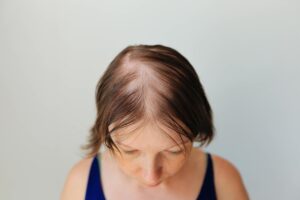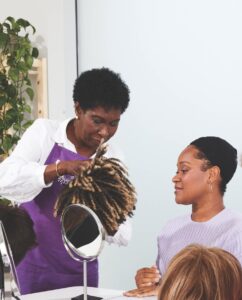Hair, Wigs & Scarves

Hair loss during treatment can be devastating but you're not alone, and you have options. From understanding different types of wigs to learning how to care for your scalp, these resources offer practical advice and gentle guidance. Whether you choose with a wig, a wrap, or nothing at all, we’re here to help you feel comfortable and in control.

“I didn’t want to invest in a wig but after reviewing these resources and attending the LGFB Hair, Wigs & Scarves workshop, I changed my mind. It will be a good option to improve my self image and look and feel better. Now I’m in the process of buying one. Thanks!”
Linda G., Workshop Participant
Prefer direct information from a professional?
Try one of our workshops today!
Let’s navigate this together
Join a community that understands. Receive expert advice, useful resources, and compassionate tips throughout your cancer journey in the LGFB newsletter








